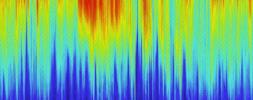The SNMREC Preferred Partner Program is an opportunity for our industry partners to collaborate more fully with the Center. This program is designed to dedicate SNMREC experts and resources to individual industry partner development needs.
Challenges
The two major usable forms of energy described in the Energy in the Florida Straits section were ocean currents and ocean thermal gradients. Converting each of these sources to usable electrical energy for our communities presents many technical, social, and environmental challenges:
Ocean Thermal Energy Conversion
Major technical challenges include optimizing heat exchangers to increase efficiency, designing platforms to support the cold water pipe and generators, and developing a reliable cold water pipe technology. The primary environmental challenge that commercial OTEC faces is demonstrating that returning warmed water to the ocean will not disrupt the ecosystem, or provide a mitigation solution so that near and long term effects are acceptable. OTEC plants are typically located close to shore and must include an offshore platform which can cause concerns for coastal residents regarding their views of the ocean. SNMREC, industry, and government are working to identify and address these and other challenges so that OTEC can be implemented economically and in an environmentally benign fashion.
Ocean Current Hydrokinetic Energy Conversion
Because proposed designs typically resemble “water-proofed” terrestrial wind turbines, it is often thought that understanding challenges of commercializing this technology is more intuitive. These include technological challenges like packaging turbines for submerged sea installations, designing appropriate moorings, optimizing rotor efficiency and effectiveness converting ocean current flow to energy, and determining downstream effects one turbine might have on others in a farm arrangement. Other intuitive challenges include speculation that fish, sea turtles and marine mammals cannot avoid striking the turbines, that habitat would be altered enough to affect marine life, and sea-bottom communities would be displaced. Intuitive social challenges include potential user conflicts with shipping, fishing, and other activities offshore. However, new challenges in each of these areas have emerged which SNMREC and partner researchers are investigating. These include other technical challenges like developing intelligent autonomous systems to determine turbine health and performance to minimize down-time and maintenance, social issues like protecting commercial installations on the outer continental shelf when our communities are dependent on the electricity they provide, and environmental issues that we may not be able to anticipate, but which may result in cumulative future effects.



